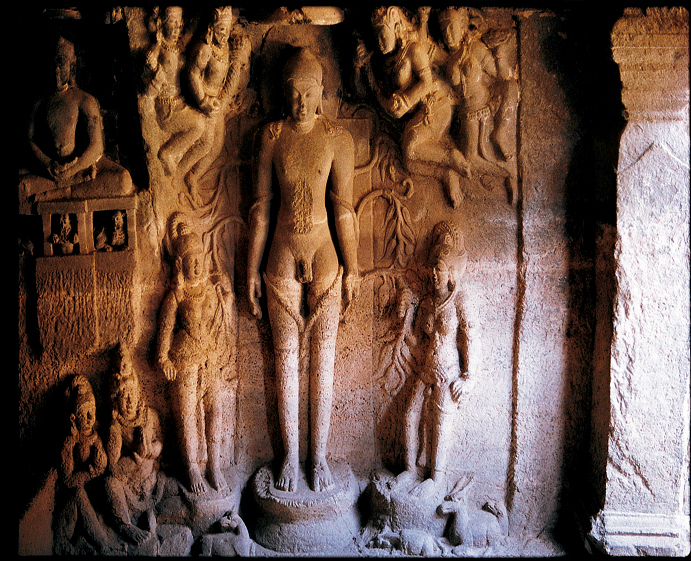A History of World Societies:
Printed Page 74
A History of World Societies Value
Edition: Printed Page 69
Jainism
The key figure of Jainism, Vardhamana Mahavira (fl. ca. 520 B.C.E.), was the son of the chief of a small state and a member of the warrior class. Like many ascetics of the period, he left home to become a wandering holy man. For twelve years, from ages thirty to forty-
Mahavira accepted the Brahmanic doctrines of karma and rebirth but developed these ideas in new directions, founding the religion referred to as Jainism. He asserted that human beings, animals, plants, and even inanimate objects all have living souls enmeshed in matter, accumulated through the workings of karma. Even a rock has a soul locked inside it, enchained by matter but capable of suffering if someone kicks it. The souls conceived by the Jains have finite dimensions. They float or sink depending on the amount of matter with which they are enmeshed. The ascetic, who willingly undertakes suffering, can dissipate some of the accumulated karma and make progress toward liberation. If a soul at last escapes from all the matter weighing it down, it becomes lighter than ordinary objects and floats to the top of the universe, where it remains forever in bliss.

Mahavira’s followers pursued such liberation by living ascetic lives and avoiding evil thoughts and actions. The Jains considered all life sacred and tried to live without destroying other life. Some early Jains went to the extreme of starving themselves to death, since it is impossible to eat without destroying at least plants, but most took the less extreme step of distinguishing between different levels of life. The most sacred life-
For the first century after Mahavira’s death, the Jains were a comparatively small and unimportant sect. Jainism began to flourish under the Mauryan Dynasty (ca. 322–
Although Jainism never took hold as widely as Hinduism and Buddhism (discussed below), it has been an influential strand in Indian thought and has several million adherents in India today. Fasting and nonviolence as spiritual practices in India owe much to Jain teachings. In the twentieth century Mohandas Gandhi, leader of the Indian independence movement, was influenced by these ideas through his mother, and the American civil rights leader Dr. Martin Luther King, Jr., was influenced by Gandhi.